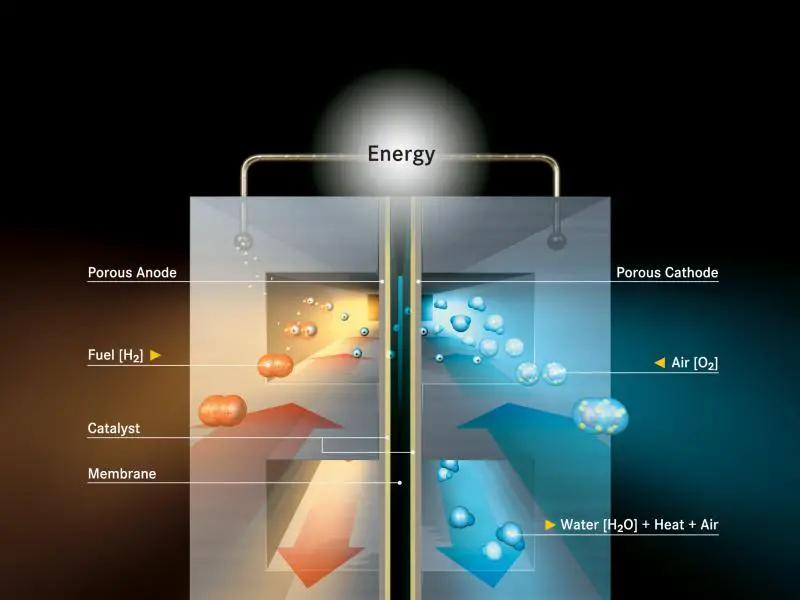Fuel Cell Electric Vehicles: Advantages & Disadvantages
Fuel Cell Electric Vehicle (FCEV) also known as Fuel Cell Vehicle (FCV) or Zero Emission vehicle. It is a type of electric vehicle that employs ‘fuel cell technology’ to generate the electricity required to run the vehicle. In these vehicles, the chemical energy of the fuel is converted directly into electric energy. The working principle of a ‘fuel cell’ electric vehicle is different compared to that of a ‘plug-in’ electric vehicle. This is because the FCEV generates the electricity required to run this vehicle on the vehicle itself. Toyota is working on one such car called Toyota Mirai.
What is a fuel cell?

A fuel cell is a device in which electrochemical reaction takes place between Hydrogen and Oxygen. The main components of a fuel cell include an anode, a cathode, and an electrolyte. In presence of an electrolyte, the fuel ions i.e. Hydrogen ions react with the Oxygen ions to produce electricity, water vapor and heat. Also, this reaction takes place at a temperature of 800C only. Thus, the other name for this reaction is the ‘cold combustion’. The electricity so generated drives an electric motor which in turn rotates the wheels of the vehicle.
The thickness of an individual fuel cell is about two millimeters. But, it can generate a potential difference of 1 volt only. Thus, a Fuel Cell Electric Vehicle uses an array of hundreds of fuel cells called ‘Fuel Cell stack’.
Main components of a Fuel Cell Electric Vehicle (FCEV):

1. Hydrogen storage tank/ fuel tank:
The gaseous Hydrogen is used as fuel in fuel cell electric vehicles. These storage tanks store Hydrogen under the very high pressure of the order of 700 bar.
2. Fuel cell stack:
This is the powerhouse of these vehicles where Hydrogen from the storage tank and Oxygen from the ambient air react to form electricity.
3. Electric Motor:
The fuel cell stack generates the electricity and supplies to the electric motor. The motor, in turn, rotates the wheels of the vehicle.
4. Electric Battery:
The function of an electric battery is to store the extra electric energy which the fuel cell stack generates. It then supplies the same when the vehicle needs more energy to run.
5. Control Module:
The control unit monitors the overall energy demand of the vehicle and thus regulates the functions of Fuel cell stack, Motor and Battery to achieve optimum performance.
Advantages of Fuel Cell Electric Vehicle (FCEV):
- Fuel cell vehicles are more efficient compared to any other conventional internal combustion engine.
- The tailpipe emissions of these vehicles contain only the water vapor and hence are non-polluting vehicles.
Limitations of Fuel Cell Electric Vehicle (FCEV):
- Storing Hydrogen under high pressure is a risky affair and may prove fatal in case of collisions.
- The excess heat generated by the fuel cell is difficult to handle and also hampers the performance over the long run.
- Furthermore, it requires modern infrastructure such as fuel refilling stations with sophisticated handling capabilities.
For more information, please click here.
